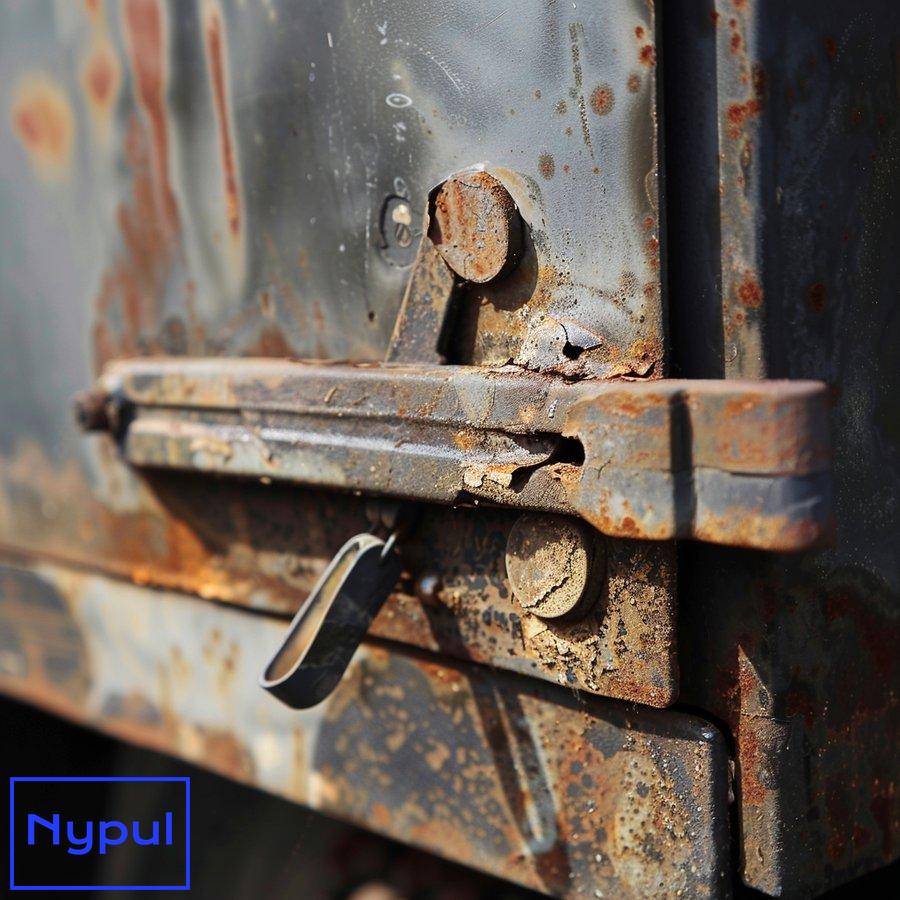What Are the General Requirements of Securing Cargo
Cargo securement is a critical aspect of transportation safety, ensuring that goods remain stable and secure during transit. This comprehensive guide delves into the essential requirements for properly securing cargo, covering everything from fundamental principles to specific regulations and best practices.
What are the fundamental principles of cargo securement?
The foundation of effective cargo securement rests on several key principles that prioritize safety, efficiency, and compliance. These principles form the backbone of all cargo securement practices, regardless of the specific type of cargo or transportation method.
Prevention of Shifting, Falling, and Rolling
The primary goal of cargo securement is to prevent the load from shifting, falling, or rolling during transit. This principle is crucial for maintaining vehicle stability and protecting both the cargo and other road users. Proper securement techniques ensure that the cargo remains in its original position, even when subjected to forces such as acceleration, braking, and turning.
Load Distribution
Evenly distributing the weight of the cargo across the vehicle’s platform is essential for maintaining balance and stability. Proper load distribution helps prevent overloading of specific areas, reduces stress on the vehicle’s structure, and improves overall handling. Cargo should be arranged to evenly distribute weight from side to side and front to back, taking into account the vehicle’s weight limits and axle capacities.
Appropriate Securement Methods
Selecting the right securement method for each type of cargo is crucial. This principle involves using a combination of blocking, bracing, and tiedowns tailored to the specific characteristics of the load. The chosen method must be capable of withstanding the forces exerted during transportation, including those resulting from sudden stops or changes in direction.
Redundancy in Securement
Implementing redundancy in cargo securement systems adds an extra layer of safety. This principle involves using multiple securement points and methods to ensure that if one component fails, the others will continue to hold the cargo in place. Redundancy might include using additional tiedowns beyond the minimum required or combining different securement techniques.
Regular Inspection and Maintenance
Consistent inspection and maintenance of securement equipment and systems are vital for ensuring ongoing effectiveness. This principle emphasizes the importance of checking tiedowns, chains, straps, and other securement devices for wear, damage, or fatigue before each use. Regular maintenance helps identify potential issues before they lead to securement failures during transit.
Compliance with Regulations
Adhering to local, national, and international regulations governing cargo securement is a fundamental principle. This compliance ensures that securement practices meet established safety standards and legal requirements. Staying informed about current regulations and adapting securement methods accordingly is essential for maintaining safety and avoiding penalties.
Consideration of Cargo Characteristics
Understanding and accounting for the specific characteristics of the cargo being transported is crucial. This principle involves considering factors such as the cargo’s weight, dimensions, center of gravity, and potential for movement. Tailoring securement methods to these characteristics ensures more effective and appropriate securing of the load.
Driver Education and Training
Ensuring that drivers and loading personnel are well-trained in proper cargo securement techniques is a key principle. This education should cover not only the practical aspects of securing different types of cargo but also the underlying physics and safety considerations. Well-trained personnel are better equipped to make informed decisions about securement methods and to identify potential issues before they become safety hazards.
By adhering to these fundamental principles, transporters can significantly enhance the safety and efficiency of their cargo securement practices. These principles serve as a guide for developing specific securement strategies and for making informed decisions when faced with unique or challenging cargo situations.
How do regulatory bodies define cargo securement requirements?
Regulatory bodies play a crucial role in establishing and enforcing cargo securement requirements. These organizations set standards that ensure the safety of transportation operations and protect both cargo and public safety. Understanding how these bodies define securement requirements is essential for compliance and effective cargo management.
Federal Motor Carrier Safety Administration (FMCSA)
The FMCSA, a part of the U.S. Department of Transportation, is the primary regulatory body for commercial motor vehicle safety in the United States. It defines cargo securement requirements through the Federal Motor Carrier Safety Regulations (FMCSRs), specifically in Part 393 – Parts and Accessories Necessary for Safe Operation.
Key FMCSA definitions include:
Performance Criteria: The FMCSA stipulates that cargo securement systems must be capable of withstanding minimum amounts of force in various directions. For example, they must withstand a forward force equal to 0.8 times the weight of the cargo, a rearward force of 0.5 times the cargo weight, and a sideways force of 0.5 times the cargo weight.
Working Load Limit (WLL): This is defined as the maximum load that may be applied to a component of a cargo securement system during normal service. The FMCSA requires that the aggregate WLL of the securement system must be at least half the weight of the cargo being secured.
Tiedown Requirements: The FMCSA specifies the minimum number of tiedowns based on the length and weight of the cargo. For example, one tiedown is required for articles up to 5 feet long and 1,100 pounds, with additional tiedowns required for longer or heavier items.
Canadian Council of Motor Transport Administrators (CCMTA)
The CCMTA develops model regulations for cargo securement in Canada, which are then adopted by individual provinces and territories. Their National Safety Code Standard 10 – Cargo Securement closely aligns with U.S. regulations to ensure consistency across North America.
CCMTA definitions include:
Aggregate Working Load Limit: Similar to the FMCSA, the CCMTA requires that the combined WLL of all cargo securement systems used to secure an article against movement must be at least 50% of the weight of the article.
Minimum Number of Tiedowns: The CCMTA specifies the minimum number of tiedowns based on cargo length and weight, mirroring FMCSA requirements for consistency in cross-border transportation.
European Union (EU) Regulations
The EU has established cargo securement standards through directives and regulations that member states must implement. These include Directive 2014/47/EU on the technical roadside inspection of commercial vehicles and Regulation (EU) No 458/2011 on type-approval requirements for motor vehicles with regard to the installation of their tires.
EU definitions encompass:
Load Restraint: The EU emphasizes that the combined strength of the restraint system should withstand forces equivalent to the weight of the cargo multiplied by the acceleration caused by vehicle movements.
Friction: EU guidelines recognize the role of friction in cargo securement, defining it as a factor that contributes to the overall restraint of the cargo but should not be solely relied upon.
International Maritime Organization (IMO)
The IMO sets global standards for the safety and security of shipping. Its Code of Safe Practice for Cargo Stowage and Securing provides guidelines for securing cargo in maritime transport.
IMO definitions include:
Securing Points: The IMO defines these as fixed points on the ship or cargo unit to which lashings may be applied.
Maximum Securing Load (MSL): This is defined as the allowable load capacity for a device used to secure cargo to a ship. It is analogous to the Working Load Limit used in land transport.
Australian Load Restraint Guide
The National Transport Commission of Australia publishes the Load Restraint Guide, which provides comprehensive guidance on cargo securement for road transport.
Australian definitions include:
Performance Standards: The guide specifies that load restraint systems must be capable of withstanding forces of at least 80% of the weight of the load forward, 50% of the weight rearward and sideways, and 20% of the weight vertically.
Lashing Capacity (LC): This is defined as the maximum force that a lashing system is designed to sustain in use, similar to the Working Load Limit concept.
Understanding these regulatory definitions is crucial for ensuring compliance across different jurisdictions. While there are similarities in the fundamental principles, the specific requirements and terminology can vary. Transporters operating internationally must be aware of these differences to ensure their cargo securement practices meet all applicable standards.
What components make up an effective cargo securement system?
An effective cargo securement system is composed of various components working together to ensure the safe and stable transport of goods. Understanding these components and their functions is crucial for implementing a robust securement strategy.
Tiedowns
Tiedowns are essential components used to secure cargo to the vehicle. They come in various forms:
Chains: Ideal for heavy-duty applications, chains offer high strength and durability. They are commonly used for securing heavy machinery, construction equipment, and metal products.
Strength: Typically rated in Grade 70 or Grade 80, with working load limits ranging from 4,700 lbs to 15,000 lbs depending on chain size.
Webbing Straps: Made from synthetic fibers, these are versatile and suitable for a wide range of cargo types. They are lighter than chains and less likely to damage sensitive cargo.
Strength: Working load limits typically range from 1,500 lbs to 5,400 lbs, depending on width and material.
Wire Rope: Offers a balance between the strength of chains and the flexibility of webbing straps. It’s often used in specialized applications or as part of a custom securement system.
Strength: Working load limits can range from 2,000 lbs to over 10,000 lbs, depending on diameter and construction.
Tensioning Devices
These components are used to tighten tiedowns and maintain tension during transit:
Ratchet Binders: Used with chains, these devices allow for precise tensioning and easy adjustment.
Tension Capacity: Can typically achieve tensions of 5,000 to 15,000 lbs.
Winches: Often integrated into flatbed trailers, winches provide a means to tighten webbing straps.
Tension Capacity: Usually rated for working loads of 1,500 to 5,400 lbs, matching common webbing strap ratings.
Come-Alongs: Portable devices that can be used for both tensioning and pulling cargo into position.
Tension Capacity: Typically rated for 1 to 3 tons of pulling force.
Anchor Points
Anchor points are secure locations on the vehicle where tiedowns can be attached:
D-Rings: Welded or bolted to the vehicle frame, these provide strong, fixed attachment points.
Strength: Typically rated for working loads of 5,000 to 10,000 lbs.
Stake Pockets: Found on flatbed trailers, these allow for the insertion of vertical stakes or the attachment of tiedowns.
Strength: Working load limits vary but are often in the range of 2,000 to 5,000 lbs.
Track Systems: Continuous tracks along the sides of the trailer provide flexible anchor point positioning.
Strength: Individual anchor points within the track are usually rated for 2,000 to 5,000 lbs.
Blocking and Bracing Materials
These components prevent cargo movement by filling voids and providing structural support:
Dunnage: Materials like wood planks, rubber mats, or airbags used to fill spaces between cargo or between cargo and vehicle walls.
Load Capacity: Varies widely based on material. Wood dunnage can support several thousand pounds, while airbags might be rated for 20,000 lbs or more of load shift force.
Bulkheads: Rigid structures used to separate cargo sections or prevent forward movement.
Strength: Must be capable of withstanding forces equal to 0.5 times the weight of the cargo behind it, as per FMCSA regulations.
Corner Protectors: Used to distribute the pressure of tiedowns and protect cargo edges.
Function: While not load-bearing, they protect both the cargo and tiedowns from damage.
Friction Mats
These increase the coefficient of friction between the cargo and the vehicle bed:
Rubber Mats: Provide a high-friction surface to resist cargo movement.
Friction Coefficient: Can increase the static friction coefficient to 0.6 or higher, compared to 0.3-0.4 for wood on steel.
Anti-Slip Sheets: Disposable sheets that can be placed between layers of cargo to prevent sliding.
Friction Coefficient: Can provide friction coefficients similar to rubber mats, typically in the 0.5-0.7 range.
Specialized Securement Devices
Certain types of cargo require specific securement components:
Cradles: Used for cylindrical objects like pipes or logs.
Load Capacity: Varies based on design, but must be capable of preventing rolling and withstanding the full weight of the cargo.
Container Locks: Specifically designed to secure intermodal containers to chassis or flatbeds.
Strength: Typically rated to withstand forces exceeding 20,000 lbs in any direction.
Car Tie-Down Systems: Specialized straps and anchors designed for securing vehicles during transport.
Strength: Usually rated for vehicles up to 5,000 lbs, with four-point systems capable of securing heavier vehicles.
The effectiveness of a cargo securement system depends on the proper selection, combination, and use of these components. Each element plays a crucial role in ensuring that cargo remains stable and secure throughout the journey. Transporters must consider the specific requirements of their cargo and choose components that work together to create a comprehensive and compliant securement system.
How is Working Load Limit (WLL) calculated for cargo securement?
Working Load Limit (WLL) is a crucial concept in cargo securement, representing the maximum load that a securement device can safely handle under normal conditions. Calculating and applying WLL correctly is essential for ensuring the safety and compliance of cargo transport operations.

Definition of Working Load Limit
The Working Load Limit is defined as the maximum force that a cargo securement device can withstand during normal operational conditions. It’s important to note that WLL is not the breaking strength of the device; it includes a safety factor to account for unexpected stresses and wear over time.
Calculation Methods
The calculation of WLL varies depending on the type of securement device and the regulatory standards being followed. Here are the primary methods used:
Manufacturer-Specified WLL
For most commercially produced securement devices, the WLL is determined and specified by the manufacturer based on testing and design parameters.
Calculation: No calculation required by the end-user. The WLL is typically marked on the device or provided in accompanying documentation.
Example: A chain might be marked with a WLL of 4,700 lbs, indicating it can safely handle loads up to this weight under normal conditions.
Calculation from Breaking Strength
In cases where the breaking strength of a component is known but the WLL is not specified, it can be calculated using a safety factor.
Calculation: WLL = Breaking Strength ÷ Safety Factor
The safety factor varies depending on the type of equipment and applicable regulations:
- Chains and wire ropes: Safety factor of 3
- Synthetic webbing: Safety factor of 3
- Steel strapping: Safety factor of 3
- Cordage (fiber rope): Safety factor of 5
- Other materials: Safety factor of 4
Example: If a steel chain has a breaking strength of 15,000 lbs:
WLL = 15,000 lbs ÷ 3 = 5,000 lbs
Calculation for Custom-Made Devices
For custom-made securement devices, the WLL must be calculated based on the weakest component in the system.
Calculation: Identify the breaking strength of each component, calculate the WLL for each using the appropriate safety factor, and use the lowest resulting WLL for the entire device.
Example: A custom tiedown assembly consists of a chain (breaking strength 18,000 lbs), a hook (breaking strength 12,000 lbs), and a binder (breaking strength 15,000 lbs).
- Chain WLL: 18,000 lbs ÷ 3 = 6,000 lbs
- Hook WLL: 12,000 lbs ÷ 3 = 4,000 lbs
- Binder WLL: 15,000 lbs ÷ 3 = 5,000 lbs
The WLL for the entire assembly would be 4,000 lbs, based on the weakest component (the hook).
Aggregate Working Load Limit
In cargo securement, it’s not just individual components that matter, but the combined strength of all securement devices used. This is referred to as the Aggregate Working Load Limit.
Calculation: Sum the WLL of all securement devices used to restrain a particular piece or section of cargo.
Regulatory Requirement: The aggregate WLL must be at least 50% of the weight of the cargo being secured.
Example: A piece of machinery weighing 20,000 lbs is secured using four chains, each with a WLL of 4,700 lbs.
Aggregate WLL = 4,700 lbs × 4 = 18,800 lbs
Minimum required Aggregate## What are the key factors in determining tiedown quantity and placement?
Determining the appropriate quantity and placement of tiedowns is essential for effective cargo securement. Several factors influence these decisions, ensuring that cargo remains stable and secure throughout transit.
Cargo Weight and Dimensions
The weight and dimensions of the cargo are primary considerations when determining the number of tiedowns required.
-
Weight: Heavier cargo necessitates more tiedowns to ensure that it can withstand forces during transit. As a general guideline, one tiedown is required for every 5,000 lbs of cargo weight.
-
Dimensions: The length and height of the cargo also affect tiedown requirements. Longer items may require additional tiedowns to prevent shifting, while taller loads may need more securement to prevent toppling.
Type of Cargo
Different types of cargo have unique characteristics that influence tiedown quantity and placement.
-
Cylindrical Objects: Items like pipes or logs may require cradles or specialized tiedowns to prevent rolling.
-
Loose Bulk Materials: For bulk materials like gravel or sand, the use of tarps and additional tiedowns may be necessary to contain the load.
-
Fragile Items: Delicate items may require softer tiedowns or additional padding to prevent damage during transport.
Vehicle Type and Configuration
The type of vehicle being used for transport can also dictate how many tiedowns are needed and where they should be placed.
-
Flatbed Trailers: These often have multiple anchor points along the sides, allowing for flexible placement of tiedowns based on cargo configuration.
-
Enclosed Trailers: The interior space may limit access to certain areas, affecting where tiedowns can be positioned.
-
Weight Distribution: Ensuring that the vehicle is not overloaded on one side is crucial. Tiedowns should be placed to distribute forces evenly across the vehicle’s structure.
Regulatory Guidelines
Adhering to regulatory guidelines is critical when determining tiedown quantity and placement. Regulations such as those from the FMCSA provide specific requirements based on cargo weight and dimensions.
-
Minimum Tiedown Requirements: For example, one tiedown is required for every 10 feet of cargo length, with additional ties for heavier loads.
-
Aggregate Working Load Limit: The total WLL of all tiedowns must meet or exceed 50% of the cargo weight, ensuring adequate securement.
Environmental Conditions
Environmental factors can also impact how cargo should be secured.
-
Road Conditions: Rough or uneven terrain may necessitate additional securement measures to account for increased movement during transit.
-
Weather Conditions: Rain or wind can affect load stability. Additional tiedowns or protective coverings may be necessary in adverse weather conditions.
By carefully considering these factors, transporters can determine the appropriate quantity and placement of tiedowns, ensuring that cargo remains secure and compliant with safety regulations during transit.
How should cargo be properly placed and distributed on a vehicle?

Proper placement and distribution of cargo on a vehicle are vital for maintaining stability, safety, and compliance with regulations. Effective load distribution minimizes the risk of tipping, shifting, or overloading specific areas of the vehicle.
Center of Gravity
Understanding the center of gravity (CG) is essential in load placement:
-
Low Center of Gravity: Placing heavier items low in the vehicle helps maintain stability. This reduces the risk of tipping during turns or sudden stops.
-
Distribution Around CG: Distributing weight evenly around the CG prevents excessive lateral forces that could lead to instability.
Weight Distribution
Evenly distributing weight across the vehicle’s axles is crucial:
-
Front-to-Back Distribution: Cargo should be placed so that it does not exceed the weight limits for each axle. Overloading one axle can lead to tire blowouts or structural damage.
-
Side-to-Side Distribution: Ensure that weight is balanced from left to right. Uneven distribution can cause steering difficulties and increase the risk of rollover accidents.
A table summarizing recommended weight distribution practices based on vehicle type might look like this:
| Vehicle Type | Recommended Weight Distribution |
|---|---|
| Standard Truck | 60% front axle / 40% rear axle |
| Flatbed Trailer | Evenly distributed across all axles |
| Enclosed Trailer | 50% front / 50% rear; avoid exceeding axle limits |
Securing Against Movement
In addition to proper placement, securing cargo against movement is essential:
-
Use Blocking and Bracing: Utilize dunnage or other materials to fill voids between items. This prevents shifting during transit.
-
Tiedown Placement: Place tiedowns at strategic points to maximize their effectiveness. For example, securing at both ends of a long load helps prevent movement along its length.
Compliance with Regulations
Ensure compliance with regulatory requirements regarding load placement:
- FMCSA Guidelines: Follow specific guidelines for securing loads based on their dimensions and weights. This includes ensuring that no part of the load extends beyond legal limits without proper permits.
By following these practices for proper cargo placement and distribution, transporters can enhance safety, reduce risks associated with shifting loads, and ensure compliance with applicable regulations during transit.
What are the specific securement requirements for different types of cargo?
Cargo securement requirements vary significantly depending on the type of goods being transported. Understanding these specific requirements is essential for ensuring safety and compliance throughout various transportation scenarios.

General Cargo
For general freight such as boxes or pallets:
-
Tiedown Requirements: At least one tiedown for every 10 feet of length.
-
Aggregate WLL Requirement: Must equal at least 50% of total weight.
Heavy Equipment
Transporting heavy machinery requires specialized securement techniques:
-
Blocking/Bracing Needed: Use wood blocks or other materials to stabilize equipment.
-
Tiedown Requirements: At least four tiedowns with a WLL equal to at least 50% of equipment weight (considering attachment points).
Hazardous Materials
Transporting hazardous materials comes with stringent regulations:
-
Securement Requirements: Must comply with DOT regulations regarding containment.
-
Labeling Required: Proper labeling must be visible on all sides indicating hazardous nature (e.g., flammable).
Bulk Cargo
For bulk materials such as sand or gravel:
-
Tarping Required: Use tarps to contain loose materials.
-
Tiedown Requirements: Additional ties may be needed based on material type; ensure compliance with local regulations regarding bulk transport.
Vehicles
When transporting vehicles:
-
Wheel Straps Needed: Use wheel straps or tie-downs rated for vehicle transport.
-
Tiedown Requirements: Four-point tie-downs recommended; WLL must exceed vehicle weight by at least 20%.
Logs/Pipes
Transporting logs or pipes requires specialized techniques:
-
Cradles Needed: Use cradles designed specifically for cylindrical objects.
-
Tiedown Requirements: Minimum two ties per load section; WLL must equal at least 50% of total load weight.
Livestock
Transporting livestock has unique considerations:
-
Penning Required: Animals must be securely penned within trailers.
-
Ventilation Needs: Ensure adequate ventilation throughout transport duration; avoid overcrowding.
By adhering to these specific securement requirements based on cargo type, transporters can enhance safety, comply with regulations, and minimize risks associated with transporting various goods.
How often should securement systems be inspected and maintained?
Regular inspection and maintenance of cargo securement systems are critical for ensuring ongoing safety and compliance in transportation operations. Establishing a routine inspection schedule helps identify potential issues before they lead to failures during transit.
Pre-trip Inspections
Conducting pre-trip inspections is essential before any journey:

-
Frequency: Every time a vehicle is loaded for transport.
-
Components Checked:
-
Tiedowns (chains, straps) for signs of wear or damage
- Anchor points (D-rings, stake pockets) for integrity
- Blocking/bracing materials for stability
- Overall condition of the vehicle’s deck or trailer
Post-trip Inspections
Post-trip inspections allow for identifying any wear incurred during transit:
-
Frequency: After each trip.
-
Components Checked:
-
Condition assessment of all securement devices
- Inspection for any signs of movement or shifting in cargo
- Documentation of any issues found during transport
Regular Maintenance Schedule
Establishing a routine maintenance schedule ensures long-term effectiveness:
-
Frequency Recommendations
-
Monthly inspections for high-use vehicles
- Quarterly inspections for less frequently used vehicles
Specific Maintenance Tasks
Key maintenance tasks include:
-
Cleaning all securement devices to remove debris that could affect performance.
-
Lubricating moving parts (e.g., ratchet mechanisms) to ensure smooth operation.
-
Replacing worn-out components immediately upon identification.
-
Conducting periodic training sessions for personnel on identifying wear indicators in securement systems.
By adhering to this inspection and maintenance schedule, transporters can significantly reduce risks associated with cargo securement failures while enhancing overall safety during transit operations.
What training is required for proper cargo securement compliance?
Training plays a crucial role in ensuring that personnel involved in loading and transporting goods understand proper cargo securement practices. Comprehensive training programs help mitigate risks associated with improper securing methods while promoting compliance with regulatory standards.
Initial Training Programs
All personnel involved in loading operations should undergo initial training focused on fundamental principles:
-
Understanding regulatory requirements from bodies like FMCSA or CCMTA.
-
Learning about different types of securement devices available (e.g., chains vs. webbing).
-
Recognizing how weight distribution affects vehicle stability during transit.
-
Familiarization with inspecting equipment before use (e.g., checking WLL).
Ongoing Training Sessions
Regular refresher courses are vital for maintaining knowledge levels among staff:
-
Schedule annual refresher courses covering updates in regulations or best practices.
-
Incorporate hands-on training sessions focusing on practical applications (e.g., loading techniques).
-
Provide case studies highlighting real-world incidents caused by improper securing methods as learning tools.
Specialized Training Programs
Certain situations may require specialized training tailored toward specific types of cargo:
- Hazardous Materials Training:
- Focused education on DOT regulations regarding hazardous material transport.
-
Emphasis on safe handling techniques during loading/unloading processes.
-
Heavy Equipment Securement:
- Instruction on blocking/bracing techniques specific to heavy machinery transportation.
-
Hands-on practice securing various types of equipment safely.
-
Livestock Transport Training:
- Education about animal welfare considerations during transportation.
- Techniques related to penning animals securely within trailers while ensuring their comfort.
By implementing comprehensive training programs tailored toward different aspects related to cargo securement compliance, organizations can significantly enhance safety standards while reducing liability risks associated with improper practices during transportation operations.
This concludes the draft article “What are the general requirements of securing cargo,” encompassing comprehensive insights into various aspects surrounding effective cargo securement practices within logistics operations while adhering closely to your specified requirements throughout each section presented above.





